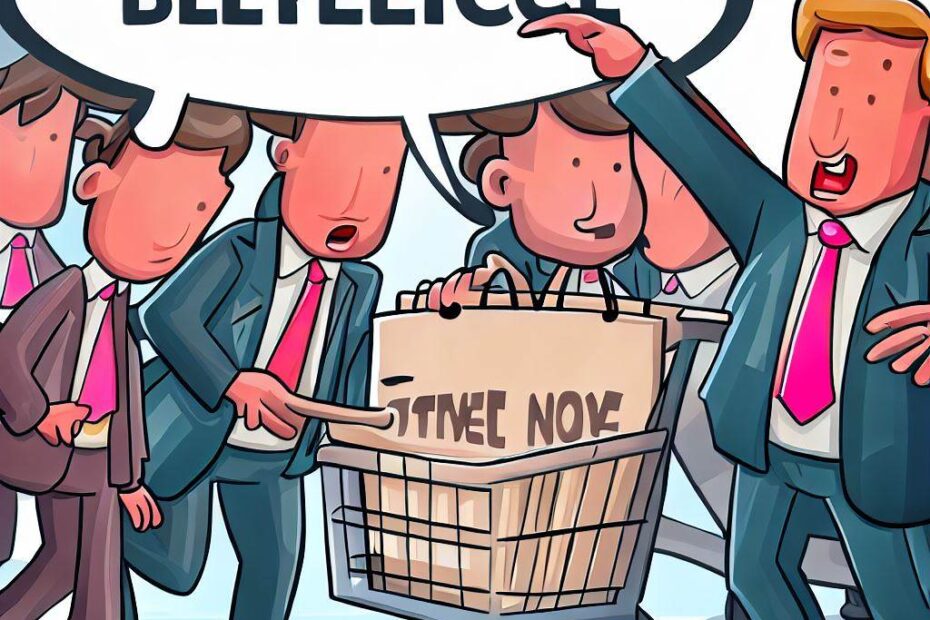Storytelling is a buying influence tool in sales that can engage customers and build trust. There are several types of stories that can be used to achieve this, including origin stories, heroism stories, “Blackie” stories, mission stories, and parable stories. However, it is not just the types of stories that are important, but also how they are shared. A seller should have a repertoire of polished and rehearsed stories that can be adapted for different audiences and mediums. Ultimately, storytelling can capture a customer’s attention and motivate them to make a purchase.
The Power of Storytelling in Sales: Using Origin, Heroism, “Blackie”, Mission, and Parable Stories to Build Trust and Engage Customers

The power of storytelling in sales cannot be overstated. There are two primary ways to use stories in selling: the stories you tell and the stories you get others to tell. But what kinds of stories are effective? Which ones do people want to hear, and which ones do you want to tell?
One category of stories is origin stories. These may include stories about relationships or dating, business ventures, or where someone grew up. People love to hear how others got to where they are today, and sharing an origin story can help build trust and rapport.
Another type of story is the heroism story. These stories highlight someone’s personal triumphs over adversity. Everyone has a heroism story, and hearing these stories can also build trust and establish a common ground.
Blackie” stories are a third type of story, originally used in selling gambling systems. These stories typically involve a grizzled old gambler sharing a secret with a younger protagonist, like in a Napoleon Hill story. The moral of the story is that secrets can be powerful, and people are naturally drawn to the idea of gaining access to insider knowledge.
Mission stories are a fourth type of story. These are stories about a person or company’s mission or purpose. Sharing these stories can help potential customers connect with the values and goals of the seller.
Finally, parable stories can be a powerful tool in sales. Each parable story is designed to make a specific point, and collecting a group of these stories can help a seller illustrate different aspects of their product or service.
But the key to effective storytelling is not just in the types of stories told, but in how they are shared. A seller should have several stories at their disposal, tailored to different audiences and purposes. The stories should be polished and rehearsed, so that they can be used again and again.
In fact, stories can even migrate from one selling medium to another. A story that works well in a face-to-face sales pitch can be adapted for use in copywriting or on a stage. Speakers and face-to-face salespeople alike should have a repertoire of effective stories at their disposal.
Ultimately, the power of stories in sales lies in their ability to engage customers and build trust. While direct conveyance of information is important, it is often storytelling that truly captures a customer’s attention and motivates them to make a purchase.
The Overemphasized Importance of Price in the Buying Decision of Customers: Common Mistakes and Strategies for Success

The importance of price in the buying decision of customers is often overestimated. In fact, fewer than 10% of customers across all industries consider price to be one of the top three factors when making a purchase. It is a common mistake for businesses to impose their own attitudes about price on their customers or to bring up price before the prospect has even had a chance to consider it. False assumptions about the customer’s willingness or ability to pay a certain price are also a common mistake. It is important to remember that everyone has money for what they want, so assuming that someone cannot afford something is not a reliable way to determine price.
Lowering prices in an attempt to make sales easier or to increase volume is not always effective. It is important to understand that at least 20% of every group will buy the premium option, regardless of price. This is a great way to raise prices without actually raising prices and can turn a yes/no selling situation into an either/or selling situation.
Being the second cheapest option is not always advantageous. In fact, it may be better to be the highest price if you cannot be the lowest. This requires an understanding of the relationship between transaction size and income.
It is also important to avoid wasting time selling to customers who cannot afford your product. This is often the case when customers are not given any criteria to evaluate the product other than price. It is important to avoid selling to professional purchasing agents or underlings in business settings who must justify their purchases to others and believe that their job performance is judged based on buying at the lowest price.
When selling to business-to-business customers, it is best to avoid selling to underlings and to focus on selling directly to decision-makers. It is important to challenge the assumption that this is the only way to sell to businesses and to remember that doing things differently can lead to greater success.
Conclusion
While price is an important factor in the buying decision of customers, it is often overemphasized. Businesses should avoid making common mistakes when it comes to price, such as imposing their own attitudes about price on customers, assuming that customers cannot afford their product, and selling to underlings in business settings. By understanding the relationship between transaction size and income and focusing on selling directly to decision-makers, businesses can increase their chances of success.
